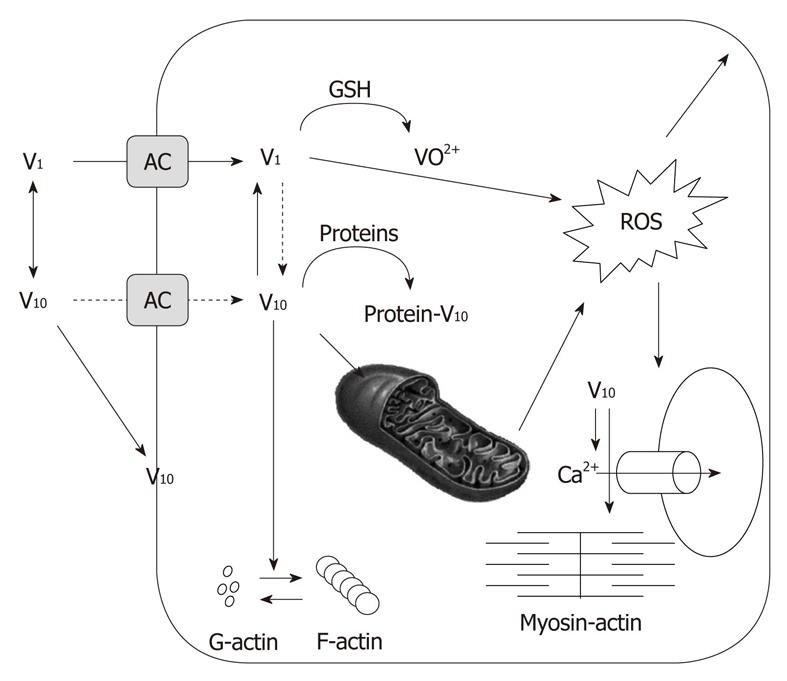Copyright
©2011 Baishideng Publishing Group Co.
World J Biol Chem. Oct 26, 2011; 2(10): 215-225
Published online Oct 26, 2011. doi: 10.4331/wjbc.v2.i10.215
Published online Oct 26, 2011. doi: 10.4331/wjbc.v2.i10.215
Figure 6 Scheme of proposed decavanadate (V10) cellular targets.
V10 uptake through anionic channels (AC). Decavanadate might interact with membrane proteins. V10 formation upon intracellular vanadium acidification in cytosol, but most probably in acidic organelles. Reduction of monomeric vanadate (V1) by antioxidant agents. Binding of V10 to target proteins; it is proposed that V10 accumulates in subcellular organelles, such as mitochondria, affecting its function. Decavanadate also targets the contractile system, and its regulation, as well as calcium homeostasis (adapted from[14]).
- Citation: Aureliano M, FCT, Algarve UO, Gambelas, Faro 81, Portugal. Recent perspectives into biochemistry of decavanadate. World J Biol Chem 2011; 2(10): 215-225
- URL: https://www.wjgnet.com/1949-8454/full/v2/i10/215.htm
- DOI: https://dx.doi.org/10.4331/wjbc.v2.i10.215









